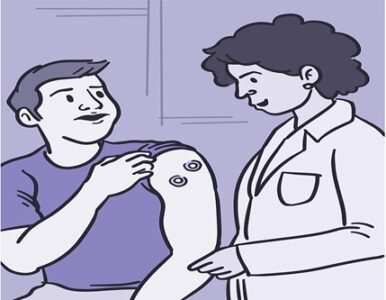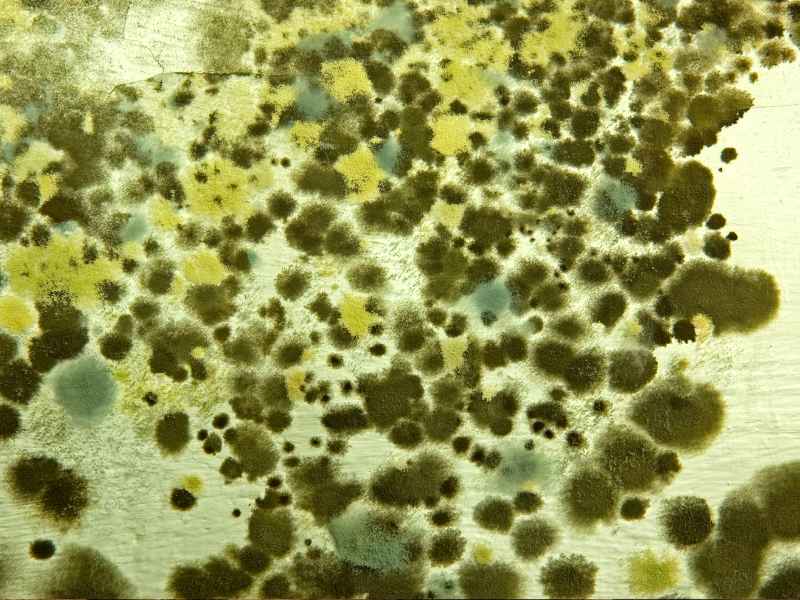Recognizing and Treating Fungal Infections

Bacteria and viruses are well-known causes of illness. But did you know certain fungi can also make you sick? Most fungi are harmless to people. We even eat some, like mushrooms. However, some fungi can cause skin problems, lung infections, and other diseases.
Fungi typically live in soil and on plants but can also thrive indoors and float through the air like other germs.
“We’re breathing in fungi every day,” says Dr. David Andes, an infectious disease researcher at the University of Wisconsin, Madison.
Illnesses caused by fungi are much less common than those caused by other germs. And most are mild. Examples include skin infections like ringworm and athlete’s foot. However, a few types of fungal infections can be deadly. Fungi that get into the lungs, blood, or brain are hazardous.
Anyone can get a fungal infection. However, people who have a weakened immune system are at much higher risk for diseases that could become serious (see the Wise Choices box).
Diagnosing a fungal infection inside the body can be tricky. “Many symptoms aren’t specific to a fungus, virus, or bacteria,” Andes explains. “So, it can be tough to tell them apart.”
Symptoms of a severe fungal infection include a fever, cough, trouble breathing, chills, headache, chest pain, and extreme tiredness.
If your healthcare provider suspects a fungal infection, they may order blood or urine tests or images of the lungs. “But these tests can still miss a lot of fungal infections,” says Andes.
Currently, there are few antifungal drugs available to treat serious infections. “And the available ones tend to have many side effects,” Andes explains.
This is because fungal cells are similar in many ways to human cells. “So it’s tough to find an antifungal that can kill the fungus without hurting human cells,” he says.
NIH-funded researchers are working on developing new antifungal drugs with fewer side effects. Many types of bacteria produce compounds that naturally kill fungi.
Andes and his lab have been testing compounds made by bacteria that live in other animals. All animals have helpful bacteria living inside them. If the compounds these bacteria make don’t harm the animals they live in, they may be good starting points for creating new antifungal drugs.
Andes’ team recently found one such compound in a marine animal called a sea squirt. They’ve tested the compound, called turbomycin, on human cells.
“So far, we’ve found that it can kill many fungi that current therapies don’t work against. And it’s not toxic to human cells,” Andes says.
Researchers are also using modern technology to understand how older antifungal drugs work so they can be modified to be safer and more effective. Given the limited treatment options, spotting and treating a fungal infection as early as possible is best.
Mold exposure symptoms can significantly impact individuals’ health. It is essential to be aware of the potential signs and symptoms associated with mold exposure so that appropriate action can be taken and medical attention sought if necessary.
Mold exposure symptoms can vary from person to person but commonly include respiratory issues such as coughing, wheezing, and shortness of breath. Other symptoms may include nasal congestion, throat irritation, skin rashes, and eye irritation. Individuals may sometimes experience more severe reactions such as fever, fatigue, and headaches.
Addressing mold issues promptly is crucial to preventing further exposure and potential health complications. If you suspect mold exposure in your environment, consider consulting a professional for proper assessment and remediation.
Please note that this report is for general informational purposes only and should not be considered medical advice. If you are experiencing symptoms related to mold exposure, it is recommended that you consult with a healthcare professional for a proper diagnosis and treatment plan. However, if you see conditions in your house or workplace that could lead to mold growth, such as elevated moisture or wet surfaces, don’t hesitate to contact Please note that this report, titled The Fungus Among Us, serves as general information and is not intended as medical advice.
If you are experiencing symptoms associated with mold exposure, seeking guidance from a healthcare professional for an accurate diagnosis and appropriate treatment is advisable. However, if you observe conditions in your residence or workplace that may contribute to mold growth, such as excessive moisture or damp surfaces, don’t hesitate to contact UHS at 786-800-4598 for a complimentary mold assessment.
“If you’re being treated for a virus or bacteria and you’re not getting better, that might indicate it’s time to ‘think fungus. It is time to call UHS at 786-800-4598 for a mold assessment. We will conduct a mold assessment of your property and determine if conditions could be affecting your health.
For Addirional resources: visit NIH News






